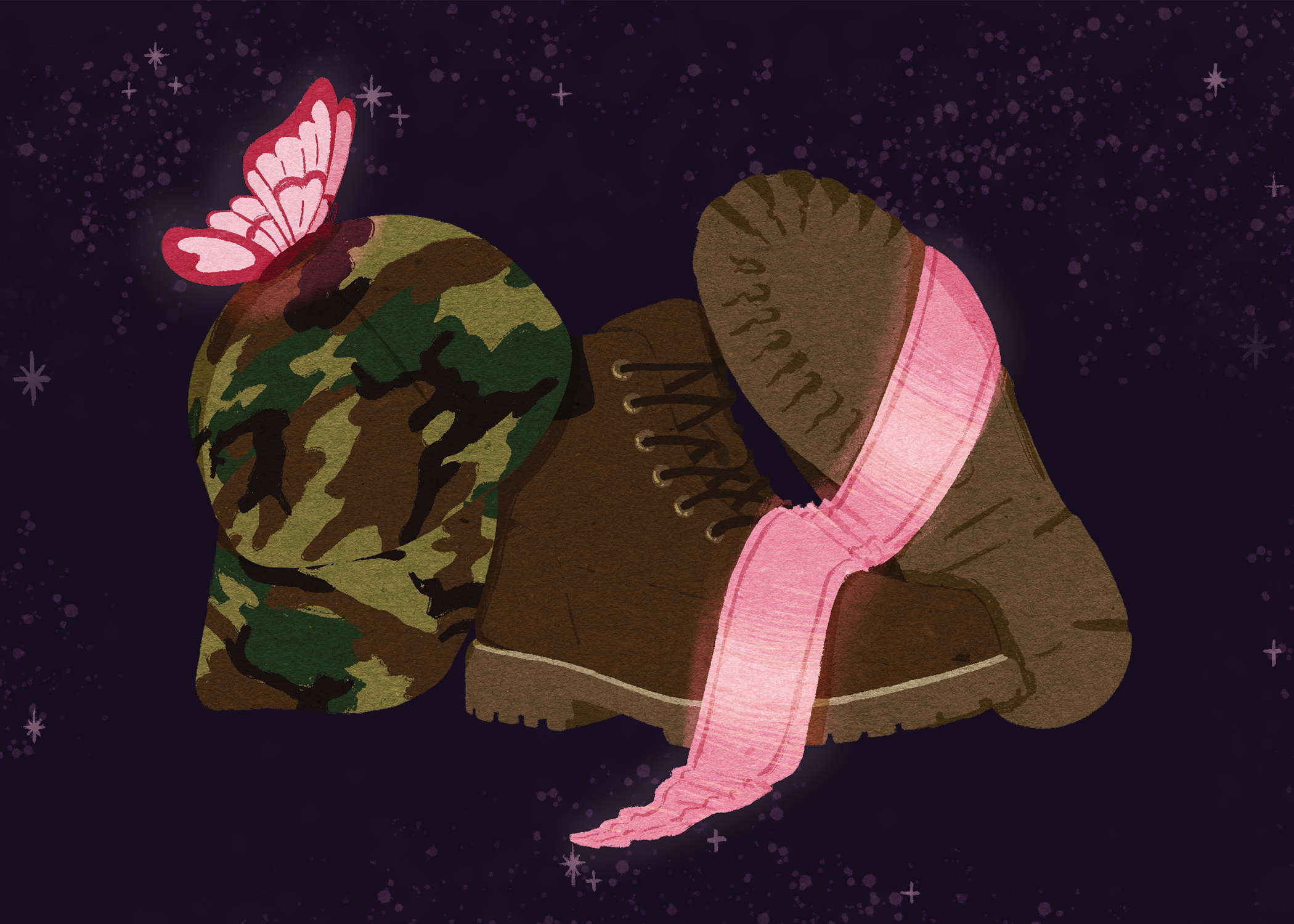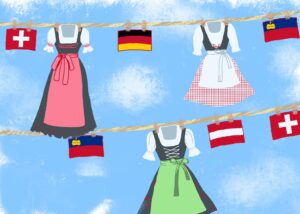At this point, everyone knows about Chappell Roan. Not to be that person, but I had been listening to Chappell long before she broke into the mainstream. To see her get the credit she deserves was incredible. As I stood in the massive crowd at Lollapalooza, I was overcome with emotion as she belted “Pink Pony Club” (2023). As a fellow gay girl from Missouri, I felt awestruck as I witnessed someone from my home state—a place that can trap people, especially queer people—truly make a name for themselves in such a grand way.
However, like many artists that experience such a rapid rise to fame, her aesthetic has burst its way into the cultural zeitgeist right alongside her music. Chappell and her “Midwest Princess” brand have completely taken over social media feeds and casual conversation. Camo print, trucker hats with orange letters, cargo pants, and calling yourself a Midwest Princess are just as common as hearing “HOT TO GO!” (2023) being played in an overhead speaker. While the rise of this aesthetic was not only Chappell’s doing, it grew exponentially with the singer’s stardom. Her meteoric rise to fame has been well-deserved and powerful to witness. However, I cannot say the same about the rise of the Midwest “aesthetic.”
Hailing from Willard, Missouri, a working class suburb of Springfield, Chappell often touts some combination of denim, camo, and big bomber jackets. She wears this style in a slightly ironic way that subverts the traditional, conservative “Middle America” narrative. Rather than cargo pants, she wears camo print gowns and sings her queer anthems outside of gas stations in Springfield. But anyone who has been to Willard, or any town like it in Missouri, knows that most people there are not wearing those items ironically. In fact, boys from my high school have been sporting this aesthetic long before Chappell Roan became Chappell Roan. And though this style of clothing is a fashion choice for some, most Midwesterners wear these items for practicality—a reality largely informed by Missouri’s economy and population.
Missouri is not a wealthy state. Its population is largely working-class and it has an economy heavily reliant on farming and manufacturing. Thirteen percent of Missourians live under the poverty line. They wear these clothes because they were intended to be affordable and practical. Carhartt was made for railway workers. Even denim was originally made to last in the mines and hide stains. This “aesthetic” for much of Missouri is not a choice, but rather a necessity. Thus, the wave of wealthy Americans buying the uniform of the working class has unintended but detrimental impacts. As more people buy flannel, Carhartt, and camo, the more these goods will cost, effectively pricing out those who actually need them. What was once affordable attire is becoming trendy and overpriced. Those who now wear these articles of clothing benefit from the aestheticized Midwest look without considering the actual work associated with it. In more extreme yet common cases, it is these very people that wear this Midwest aesthetic that look down upon Midwestern people. I hear snide comments about my home state all the time. I am frequently told that my education “must” have been poor and biased. Even for most of my friends (Chappell Roan fans), living in Missouri is unimaginable.
It is this idea of having the privilege to take on and off the Midwest Princess look that rubs me the wrong way. For a long time, I thought I was blowing this issue out of proportion because of my own fraught relationship with Missouri, but it’s this dissonance that makes my point. It is not always easy to be from Missouri. I was 17 when I watched my reproductive rights get stripped away 45 minutes after the Supreme Court overturned Roe v. Wade. I see new legislation every day that would take away my right to get married, have children, and be comfortable sending those kids to school. I, like many Midwesterners, spent most of my life yearning to get out. I wanted nothing to do with my hometown, its lifestyle, or its politics because it felt like it wanted nothing to do with me.
Yet, I emerged from that angst with a fondness for the little things at home. When I am in D.C., I miss the sunshine through the trees on my neighborhood walks. I miss the rolling fields on long drives to visit family. I miss football season and everyone I know wearing Chiefs red on game days. I miss waving to everyone you see walking their dogs, even if you don’t know them. I miss the people, not the backwards, bigoted stereotype that those from the coasts, who laud this Midwest aesthetic, imagine when they think of Missouri. There is a soul to Missouri that not everyone sees.
And while I do love Missouri, that angst is still something I reckon with. The state’s policies do not disappear just because my neighbors are kind. That is still what I have to go home to. It is not something that I can just put on when I want to cosplay being from the Midwest. I am not someone from California that can play make-believe in a Midwest Princess t-shirt for a few days and then go home to the safe haven of a rich, blue suburb, and neither can anyone from these red, Midwestern, working class states. It is not an aesthetic—it’s part of the world that I, and everyone I care about, live, suffer, and love in.
All this to say that it is still a net positive that Chappell Roan is popular. She has used her platform to advocate for queer people, especially queer youth in the Midwest. This is more to highlight how the Midwest Princess aesthetic faces some significant misunderstanding. It is a call to be conscious when you deem states like Missouri backwards and somewhere unfathomable to live in. It is a call to be conscious when you look down on blue collar workers when fighting for your next corporate internship. While you disparage these communities from afar, driving up the prices of their basic needs like clothing, remember there are real people living these lives. While you may get to just experience the rise of the Midwest Princess, many real people live through the fall as well.





